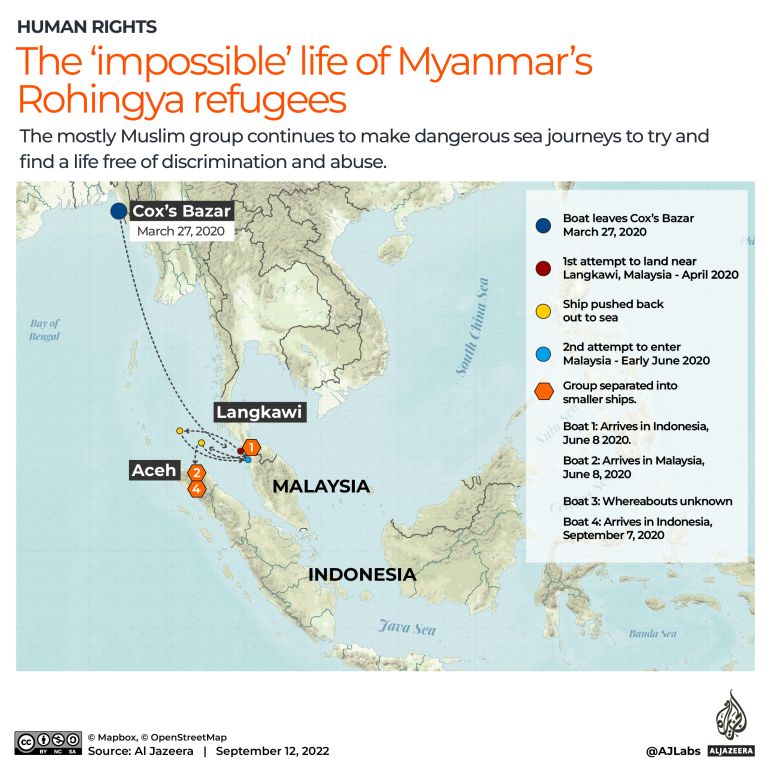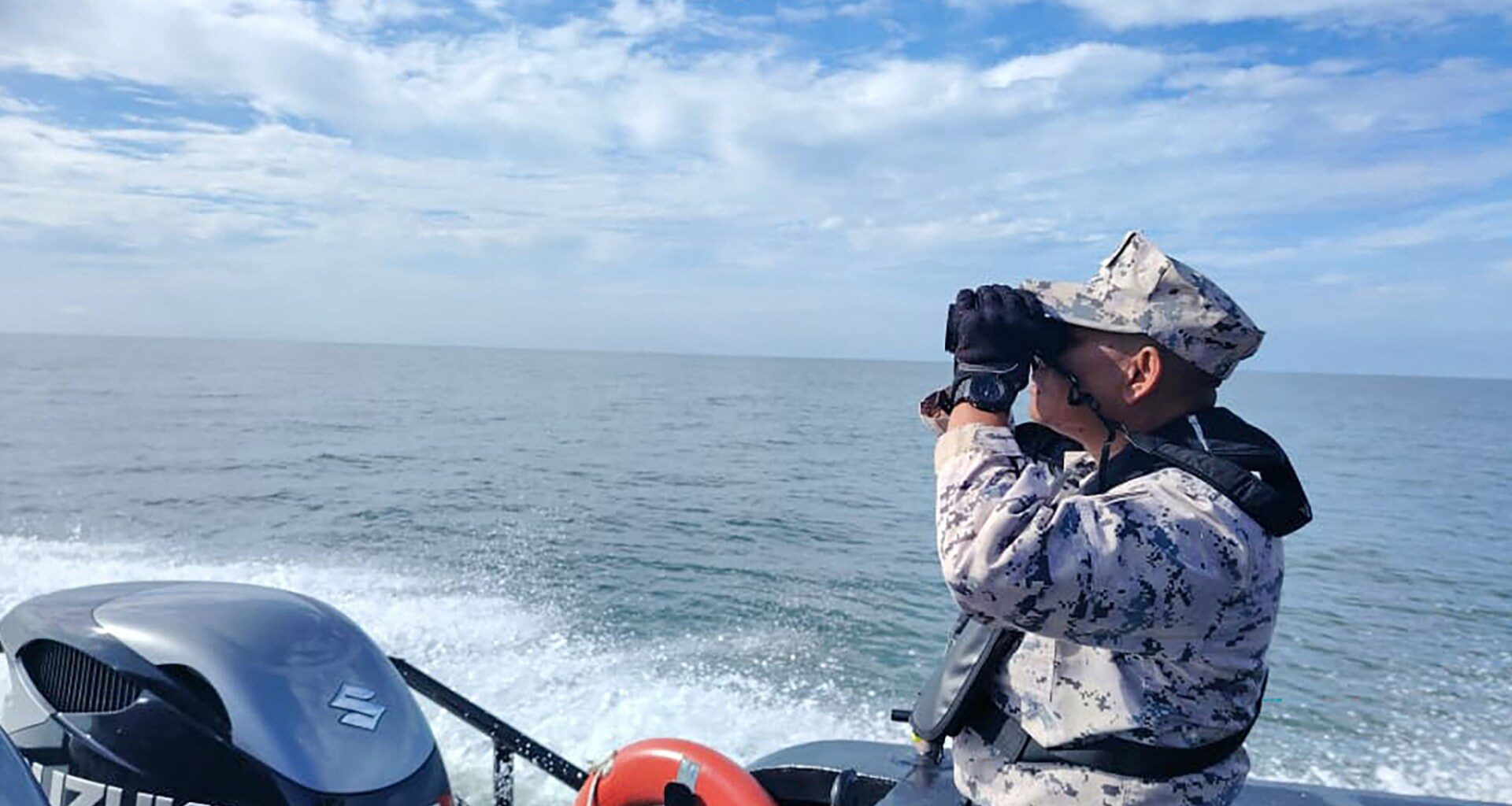Rescue operations under way to locate any survivors, with hundreds of Rohingya still missing.
A boat carrying Rohingya people fleeing Myanmar has capsized near the Thai-Malaysian maritime border, killing at least seven people and leaving hundreds missing.
Rescue teams recovered seven bodies on Sunday, including five women and a girl. Teams have rescued 13 survivors so far, according to Romli Mustafa, head of the Malaysian Maritime Enforcement Agency (MMEA) in the region.
Recommended Stories list of 4 itemsend of list
The vessel went down off Thailand’s Tarutao Island, just north of Malaysia’s Langkawi Island.
Authorities said the boat was part of a larger group of about 300 Rohingya who departed Myanmar’s Rakhine state three days earlier aboard multiple vessels.
“As they neared the border, they were instructed to transfer onto three smaller boats, each carrying around 100 people,” Kedah state police chief Adzli Abu Shah told local media.
Two of the boats remain missing, and rescue operations are continuing across an area near Langkawi that stretches for 583 square kilometres (170 square nautical miles).
“We have requested the Malaysian Maritime Enforcement Agency and the Marine Police to launch search-and-rescue operations and to look for the other missing boats,” Adzli said.
Images released by MMEA showed one survivor covered by a sheet and another lying on a stretcher as rescue crews scoured the waters.
“Cross-border syndicates are now increasingly active in exploiting migrants by making them victims of human trafficking using high-risk sea routes,” Romli said.
Reports suggest traffickers charge up to $3,500 per person for the perilous journey.

Dangerous crossings
Reporting from Kuala Lumpur in Malaysia, Al Jazeera’s Rob McBride said a major search-and-rescue operation is under way.
“The authorities believe that the migrants set off around three days ago from a part of the coast in Myanmar – they are thought to be mainly from the Rohingya minority,” he said.
“This is a well-used maritime route sailing down the coast of Thailand, heading towards Malaysia, where they will hope to start a new life, where often they will have relatives and acquaintances who are already here in Malaysia.”
Malaysia is home to millions of migrants and refugees from other parts of Asia – many of them undocumented, working in industries including construction and agriculture.
Members of the mainly Muslim Rohingya minority periodically flee predominantly Buddhist Myanmar, where they are seen as foreign interlopers from South Asia, denied citizenship, and subjected to abuse. Nearly one million Rohingya refugees live in cramped camps across southern Bangladesh.
Myanmar has also been mired in civil war fought between the military and multiple armed opposition groups since a 2021 coup, when the military seized power from the elected government of Nobel Peace Prize laureate Aung San Suu Kyi.
Many of the refugees attempt maritime crossings to relatively affluent regional countries such as Malaysia and Thailand, facilitated by human trafficking syndicates. But the trips often turn hazardous, leading to frequent capsizing.
In one of the worst incidents in December 2021, more than 20 people drowned in several capsizing incidents off the Malaysian coastline.
“According to the authorities, the situation in Myanmar – with the increased instability and also the ongoing civil war – is forcing people to take ever more desperate maritime journeys to try and start a new life,” said McBride.
“And as we’ve seen in this case, some of those journeys end with very tragic consequences.”
